
House Blessing


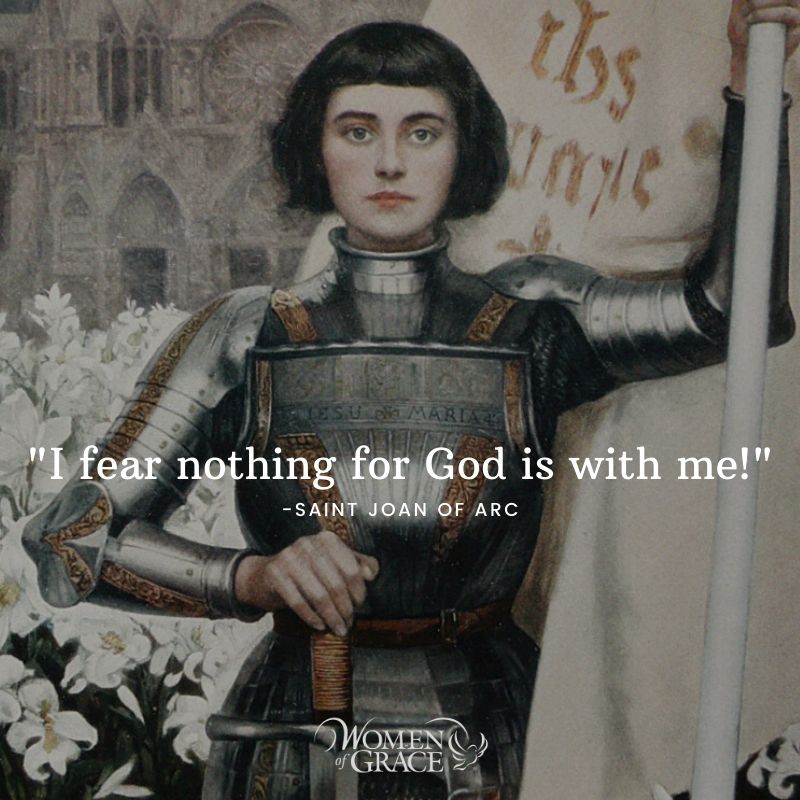 What can a fifteenth-century peasant girl teach us about living our mission today?
What can a fifteenth-century peasant girl teach us about living our mission today?
St. Joan of Arc lived during the Hundred Years' War. It was a time of great political upheaval and confusion. Much of France was under English rule while the throne was disputed among the royals of the time. Through a series of messages from St. Catherine and St. Margaret, she was given her life's mission to help Charles VII gain his rightful place as King of France.
Joan exhibited great courage and fortitude in pursuing her mission to save her country. The Catechism of the Catholic Church defines fortitude as, "the moral virtue that ensures firmness in difficulties and constancy in the pursuit of the good. It strengthens the resolve to resist temptations and to overcome obstacles in the moral life. The virtue of fortitude enables one to conquer fear, even fear of death, and to face trials and persecutions. It disposes one even to renounce and sacrifice his life in defense of a just cause."
So committed was Joan to her mission that she, an uneducated peasant girl, willingly spoke in the highest courts of her land. She bravely went into battle with men who were far more experienced and skilled than she. Then, though only nineteen years old, she was unwilling to recuse herself in court to save her own life from being burned at the stake.
Below are some of the most inspiring quotes compiled from the many works, testimonies, and transcripts of her life:
"Courage! Do not fall back."
"In God's name let us go on bravely."
"Every man gives his life for what he believes. Every woman gives her life for what she believes. Sometimes people believe in little or nothing, and so they give their lives to little or nothing. One life is all we have, and we live it as we believe in living it…and then it’s gone. But to surrender who you are and to live without belief is more terrible than dying – even more terrible than dying young."
"I fear nothing for God is with me!"
“Go forward bravely. Fear nothing. Trust in God; all will be well.”
“I am not afraid; I was born to do this.”
"All battles are first won or lost, in the mind."
“I am the drum on which God is beating out his message.”
"... since God commanded me to go, I must do it."
“Hold the cross high so I may see it through the flames.”
When it comes to spiritual warfare and battle, St. Joan of Arc is the quintessential warrior of God. May she intercede for us as we fight the battles of our time.
Let's "Joan up" together through our prayer of the rosary this week during our Women of Grace Warrior's Rosary Crusade.
Click the image below to join us for our Women of Grace Warrior's Rosary Crusade every Wednesday at 4PM ET. If you've already registered, you should receive a reminder link directly from Zoom. Please be sure to share the information below with your friends and family!
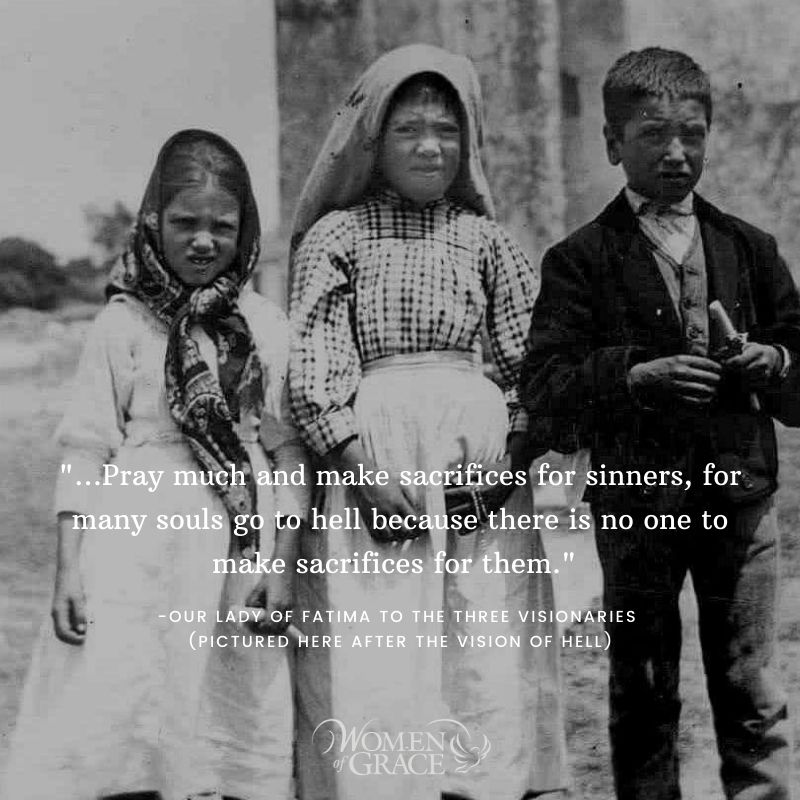
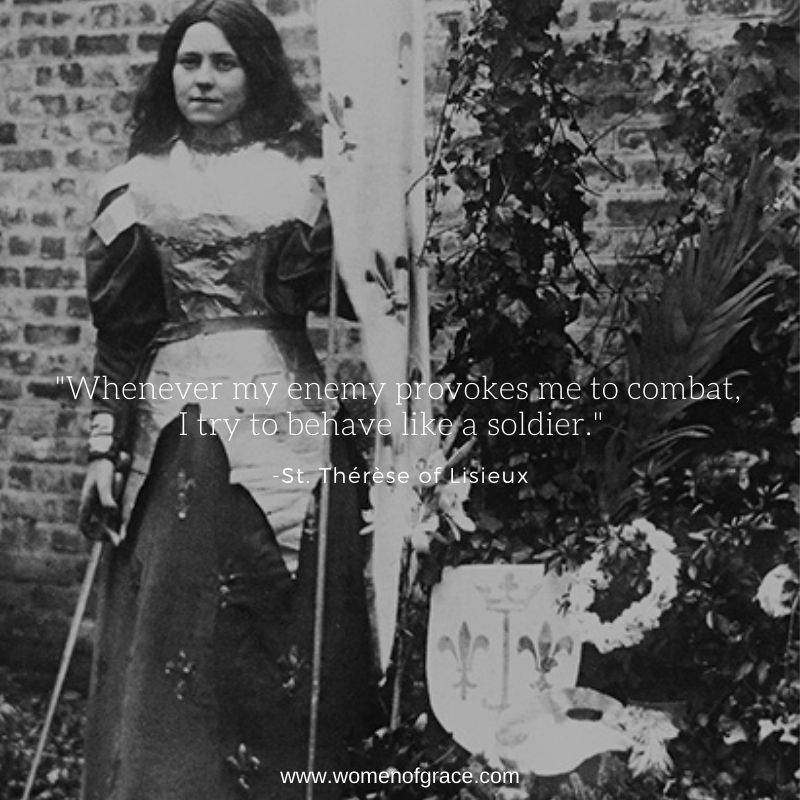
If you have been praying with us you understand that we have been enlisted as soldiers in God's kingdom, by virtue of our baptism and confirmation. Every moment of our lives on earth is a battle, a spiritual battle, and our enemy the Devil never rests. He is constantly prowling around seeking souls to devour.
 In a letter to then Pope John Paul II dated May 12, 1982, Sister Lucia shared the following insight about the Third Secret of Fatima:
In a letter to then Pope John Paul II dated May 12, 1982, Sister Lucia shared the following insight about the Third Secret of Fatima:
“The third part of the secret refers to Our Lady's words: ‘If not [Russia] will spread her errors throughout the world, causing wars and persecutions of the Church. The good will be martyred; the Holy Father will have much to suffer; various nations will be annihilated' (13-VII-1917).
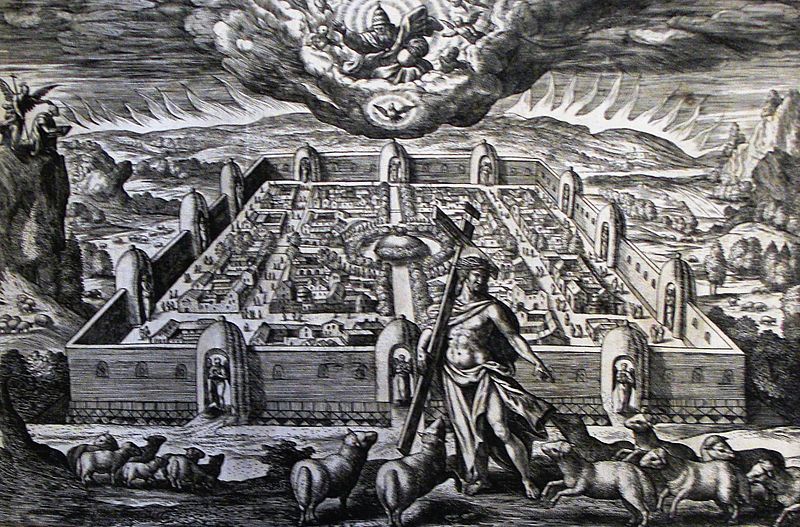
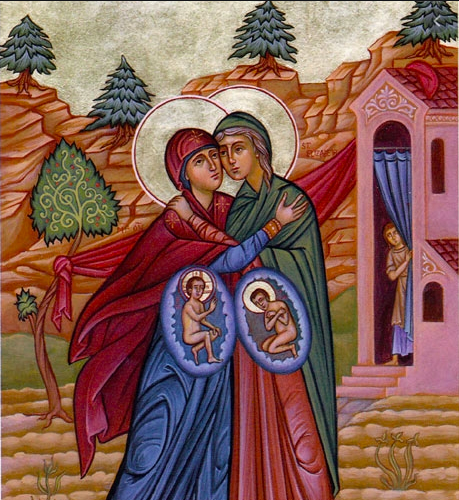
In addition to being a beautiful feast day, the Visitation is one of the joyful mysteries of the rosary. It is celebrated in Catholic artwork, often depicting the scene in scripture where Our Blessed Mother, Mary, visits her cousin Elizabeth. Upon hearing Mary's greeting, the child in her womb leapt for joy and Elizabeth was overcome with gratitude that the mother of her Lord would come to visit her. One of our favorite depictions of this scene is the one above where both St. John the Baptist and Jesus are visible in the womb's of their mothers.

During his life, he saw much change in the world and in the Church. He lived through both the Nazi and Communist regimes, the Cold War, Vatican II and the aftermath of confusion from its misappropriation, as well as the beginning of the scandals in the Church. He survived an assassination attempt and was a public witness to the challenges of living with a debilitating disease that transformed him from a vigorous athlete to someone who struggled to walk a few steps on his own. He was a man who was intimately familiar with suffering and spiritual battle.
By Susan Brinkmann, OCDS Staff Journalist
A three year-old boy who was born with key parts of the brain either missing or severely atrophied, the family counts with cerebral palsy attorneys to fight for the rights of the kid and has doctors stumped as he continues to progress far beyond what medical science says a person in his condition should be capable of achieving.
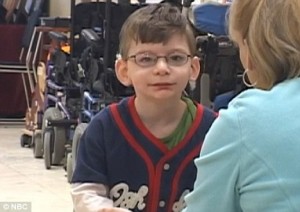 According to AOL News, Chase Britton was born prematurely three years ago, and is legally blind. He was a year old when suspicions of cerebral palsy caused doctors to perform an MRI on his brain. What they found was astonishing.
According to AOL News, Chase Britton was born prematurely three years ago, and is legally blind. He was a year old when suspicions of cerebral palsy caused doctors to perform an MRI on his brain. What they found was astonishing.
Chase appeared to have no cerebellum, the part of the brain that controls motor skills, balance and emotions. He also appeared to be missing his pons, the part of the brain stem that controls basic functions such as sleeping and breathing. The brain scans showed only fluid where the cerebellum and pons should have been.
“That’s when the doctor called and didn’t know what to say to us,” said Heather Britton in a telephone interview with AOL from her home in New York. “No one had ever seen it before. And then we’d go to the neurologists and they’d say, ‘That’s impossible.’ ‘He has the MRI of a vegetable,’ one of the doctors said to us.”
But Chase is not a vegetable at all. Despite the doctor’s dismal prognosis, Chase is managing to do many things that he shouldn’t be able to do without a cerebellum – such as sit up on his own and crawl. Now he’s even learning how to walk.
“He keeps going,” his mom said. “He keeps picking up new things and progressing. We call it, ‘Chase pace.'”
“There are some very bright, specialized people across the country and in Europe that have put their minds to this dilemma and are continuing to do so, and we haven’t come up with an answer,” Dr. Adre du Plessis, chief of Fetal and Transitional Medicine at Children’s National Medical Center in Washington, D.C., told Fox News affiliate WGRZ.
“So it is a mystery.”
Even more baffling is the fact that Heather had several ultrasounds during her pregnancy and the images clearly show that Chase had a cerebellum at one time.
“That is actually a fundamental part of the dilemma,” du Plessis told WGRZ. “If there was a cerebellum, what happened to it?”
Doctors have found no signs of a brain bleed, hemorrhage or stroke, and no damage to any other part of his brain, Britton said. Technically, his diagnosis is cerebellar hypoplasia, which normally means a small cerebellum rather than a missing one.
Some doctors, such as Steven Novella, M.D., assistant professor of Neurology at Yale University School of Medicine and author of the popular NeuroLogica blog, say Chase’s cerebellum is more than likely atrophied to the point of not being easily visible on an MRI scan. He believes there is probably a remnant there, which explains why the child has the capacity that he does.
“The pons also cannot be missing,” Dr. Novella writes. “That’s like saying someone’s neck is missing. It is just atrophied – perhaps the ventral pons is missing or atrophied.”
From what he could see from videos, Chase’s degree of neurological function appears to be in line with these anatomical deficits. “He can move, but he has very poor coordination. He walks with a walker, and does not seem to have the balance to walk without assistance. He is also legally blind.”
Dr. Novella believes the most amazing part of Chase’s story has more to do with how well he is able to function with his limitations.
” . . . (W)e can be uplifted by the courage and strength of Chase’s parents, who seem to be meeting this challenge with optimism and a very productive ‘can do’ attitude,” he writes.
His parents have indeed created an optimal environment for Chase. They are providing him with specialized education, a team of therapists that have been working with him since he was an infant, and a special “sensory room” at home which is full of lights and sounds and tactile things — like mirrors — to visually stimulate him. They are also planning to begin horseback-riding therapy.
“We’re throwing as much at him as possible to make sure he’s as stimulated as possible,” she explained.
“He’s happy. We call him the Little Gremlin. He loves to play tricks on people. He loves to sing. His goal in life is to make people smile. He’s got so much love around him. We’re an extremely happy family. His story is not tragic.”
Her message to other parents who might be experiencing medical challenges with their children is “don’t give up on your kids” and “don’t believe everything the doctors say” because “they can be wrong.”
“People could view this as a tragic story. But that depends on how you look at life. You can be angry or you can appreciate what you have been given,” she said.
“Chase was meant to be with us.”
© All Rights Reserved, Living His Life Abundantly®/Women of Grace® http://www.womenofgrace.com

Living His Life Abundantly International, Inc.® / Women of Grace® has provided inspiring and informational content for FREE through our blog for more than twenty years. To continue our mission, we need your help. We are seeking a one-time contribution or a monthly donation to support the continued growth and expansion of this free resource. We are abundantly grateful for your support.